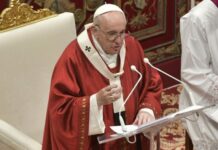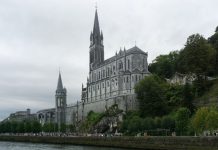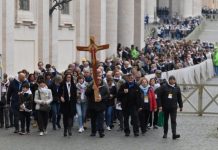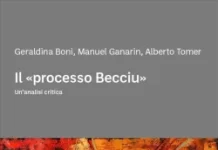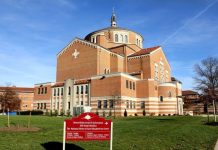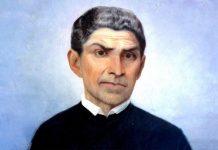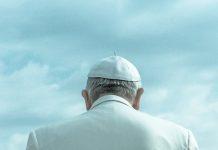Every day the Catholic Church remembers those who have given faithful witness to their Christian Faith throughout their lives. Here are some of the Saints we commemorate during the month of September.
Newsroom (Septembetr 02, 2021 08:12, Gaudium Press) Check out the main Saints celebrated during the month of September:
September 1st: Saint Beatriz da Silva
Born in the 15th century in North Africa, she cultivated a great devotion to Our Lady of the Conception, later founding the Order of Conceptionist Nuns, who follow a strict cloistered life dedicating themselves to prayer, penance and work. This religious community inherited three devotions from Saint Beatriz: the love for the Immaculate Mary, the Passion of Jesus Christ and the Holy Eucharist.
September 2nd: Blessed Ingrid
She was born in the XIII century in a noble family in Sweden. From an early age she expressed her desire to follow religious life, but, as was the tradition in the nobility, she married a wealthy man of the time. When she became a widow she made her perpetual vows and founded a monastery under the Rule of St. Dominic, where she devoted herself entirely to prayer, contemplation and religious austerity.
September 03: Saint Gregory the Great, Pope
Born in the year 540, he was raised in a very Christian family. He became mayor of Rome and after offering a palace to a group of Benedictine monks to found a convent, he felt a strong call to a religious vocation. He renounced his public life and joined the convent. A short time later he was elected Pope. During his pontificate, he instituted the observance of celibacy, the introduction of the Our Father in the mass, and Gregorian chant.
Read also: Saint Gregory the Great, Pope and Doctor of the Church
September 4: Saint Rosalia
Born in the year 1125 into a very wealthy family, at the age of 14 she abandoned court life and took refuge in a cave, taking with her only a crucifix and the clothes of her body. There she followed a hermitic life of prayer and penance. Even living in isolation, she attended liturgy and received spiritual guidance in a Benedictine convent near the cave. Among the many miracles attributed to her intercession is the extinction of the plague that devastated Sicily in the 12th century.
September 5th: Saint Teresa of Calcutta
Born on August 27, 1910 in Albania, she was baptized Agnes Gonxha Bojaxhiu. At the age of 18 she entered the Mother House of the Sisters of Our Lady of Loreto in Ireland. In 1931 she was sent to India, where she took the name Teresa, inspired by the example of the Carmelite Saint of Lisieux. In 1949 she founded the Missionaries of Charity, dedicated to evangelization among the poorest people of Calcutta. In 1979 she received the Nobel Peace Prize. She was beatified by Pope John Paul II on October 19, 2003, World Mission Day, and canonized by Pope Francis on September 4, 2016.
September 6: Saint Liberatus of Loro
Born in 3rd century Italy, he abandoned his life of luxury to heed God’s call to a life of Faith. He was ordained a priest, consecrating his life to penance and contemplative prayer. He took the habit of the Order of Friars Minor of St. Francis and retired to the Franciscan convent of Sofiano, where he lived a life of virtue and holiness.
September 07: St. Clodoaldo, Confessor
Born around the year 530, he was the grandson of the King of France, converted by his wife, Saint Clotilde, from whom he received a solid catechetical formation. In his adolescence, he witnessed the murder of his brothers and vowed revenge. However, when he met St. Severino, he abandoned this feeling of revenge and entered a monastery, where he was ordained and became a preaching missionary. Clodoaldo was the first French prince to be canonized.
September 8th: Our Lady’s Nativity
Nine months after celebrating the Immaculate Conception of Our Lady, the Church celebrates the feast of her Birth. It was necessary to build a house before the King would descend to inhabit it, and Mary built this “house” with seven columns, representing the seven gifts of the Holy Spirit. According to an ancient tradition the parents of Our Lady, Saint Joachim and Saint Anne, could not have children, until amid tears, penances and prayers, they achieved this grace from God.
Read also: The Feast of the Nativity of the Blessed Virgin Mary
September 9: St. Peter Claver
He was born in Verdú, Catalonia, in the year 1580. At the age of 21 he joined the Society of Jesus in Barcelona. After his studies he was ordained priest and sent as a missionary to Cartagena, Colombia. He lived his apostolate serving and caring for slaves physically and spiritually for more than forty years, and even vowed to spend his entire life at the service of black slaves. He was declared by St. Pius X as special patron of all missions among blacks.
September 10: Saint Nicholas Tolentino
He was born in Italy in 1245. From childhood his concerns were prayer, fasting, and an enormous compassion for the less fortunate. In 1274 he joined the community of Augustinians, where he was ordained a priest. He was endowed with great charisma and special gifts. His preaching was joyful and consoling in Divine Providence, and through his example, he led the faithful to practice penance. He also proved to be one of the most significant apostles of the confessional in the Church, spending hours attending to penitents from all regions.
September 11: Saint John Gabriel Perboyre
He was born in 1802 in France. At 14 he joined the Congregation of the Mission founded by St. Vincent de Paul. In 1826 he was ordained a priest and in 1835 was sent on mission to Macao in China, where he disguised himself as a Chinese, learned the language and the local customs, since the presence of foreigners was forbidden by law. He was eventually denounced, persecuted, and imprisoned. During his time in captivity, he suffered cruel tortures, until he was tied to a cross and strangled to death. He was the first missionary from China to be declared a saint by the Church.
September 12: Saint Guido of Anderlecht
He was born in the 10th century in Belgium. In his youth, he gave everything he owned to the needy. Wearing the habit of a pilgrim, he dedicated his life to prayer, penance, and the service of the poor and the sick. For seven years he went on pilgrimage to the greatest shrines of Christianity in Europe, also visiting the Holy Land. He is considered the protector of coachmen, especially horses.
September 13: Saint John Chrysostom
Born in Antioch in the year 348, he showed a “monastic soul” from an early age, spending years in the desert in silence. Upon his return to Antioch he was ordained a priest and was noted for his gift of communicating the Word of God, which gave him the title of “Golden Mouth”. After numerous requests from the emperor, he assumed the pastoral government of the Diocese of Constantinople. His preaching against luxury and the immorality of social life caused him problems with the Empress Eudoxia, who sent him into two exiles, the last of which cost him his life due to ill treatment.
Read also: Saint John Chrysostom: The Power of the Word
September 14: Exaltation of the Holy Cross
This festival originated in Jerusalem in the first centuries of Christianity, being commemorated on the day when the cross of Our Lord was found. With great rapidity this celebration spread throughout the East and then throughout Christendom. In Rome, it was commemorated with a solemn procession from St. Mary Major to St. John Lateran to venerate the cross. In the early 7th century, the Persians sacked Jerusalem, destroyed many basilicas and seized the sacred relics of the Holy Cross, which were soon afterwards recovered by Emperor Heraclius.
Read also: Exaltation of the Holy Cross
September 15: Our Lady of Sorrows
This is an ancient devotion in which Our Lady is represented being wounded by seven swords in her Immaculate Heart (sometimes a single sword), as she was pierced by a sword of sorrow at the sight of the Passion and Death of her Divine Son. She joined herself to the sacrifice of the Redeemer, and is therefore called by many saints and theologians the Co-redemptrix of humankind. She is also often represented with a sorrowful expression before the Cross, contemplating her dead Son, or holding in her arms our dead Lord Jesus Christ.
Read also: Our Lady of Sorrows
September 16: St. Cornelius Pope
Third century. During his pontificate he had to deal with Novatian, who proclaimed himself the antipope, creating the first schism in the Church. During this period, the Church was divided between the followers of St. Cornelius who favored admitting the “lapsi” (deserters from the Catholic Faith) back into the Church, and the followers of Novatian who advocated the exclusion of these sinners. The pagan emperor Valerian, exiled St. Cornelius and sentenced him to martyrdom for not agreeing to worship pagan gods.
September 17: St. Robert Bellarmine
Born on October 4, 1542 in Italy, he completed his studies in 1571, became a priest and joined the Society of Jesus. He wrote three volumes of one of the most consulted theological works of all times “The Christian Controversies about Faith”, a treatise on all heresies. For many years he worked as an advisor to the Roman pontiffs. He was proclaimed Doctor of the Church.
Read also: Saint Robert Bellarmine
September 18: St. Joseph Cupertino
He was born in 1603 in Italy. His limited intelligence and difficulties in manual labor were compensated in an extraordinary way in the field of prayer and charity. He was fired from two convents for not being able to correspond to the common jobs and services. Through the intercession of the Blessed Virgin, he managed to enter a Franciscan convent and be ordained a priest. Mystical phenomena accompanied by miraculous cures made him known and sought after by many people. He was beatified by Benedict XIV in 1753 and canonized by Clement XIII in 1767.
Read also: St. Joseph of Cupertino: Patron Saint of Students
September 19: St. Gennaro
In the year 304, the Roman Emperor Diocletian unleashed the last and most violent persecution against the Church. The bishop Januarius was arrested along with some other members of the clergy, all of whom were tried and sentenced to death. They were thrown to the lions, but the beasts became tame and did them no harm. The emperor then ordered that they all be beheaded on the spot. To this saint is attributed the “miracle of the blood of St. Gennaro”. During his feast day the relic of his blood liquefies, acquiring the appearance of freshly spilled blood and a red coloration.
September 20: Saint Andrew Kim and Companions
Andrew was born in 1821 in Korea. At the age of fifteen he was sent to China, where he became a deacon in 1844. Later he was ordained a priest. Because of his noble status and his knowledge of local customs and thought, he achieved great results in his evangelizing apostolate. But he ended up being discovered and arrested together with his fellow community members. After being severely tortured for a long period, he was martyred along with his companions in Seoul, Korea, for not d
September 21: Saint Matthew Apostle and Evangelist
He was born with the name Levi. When he received Jesus’ invitation, he left his former life as a tax collector and followed his vocation as an apostle, changing his name to Matthew, which means “gift of God. He died by order of King Hitarchus, for not having interceded in favor of the marriage request made by the monarch, and refused by the young Iphigenia, who had decided to consecrate herself to Jesus. He is the patron saint of the Italian city of Salerno, where his relics are.
Read also: Saint Matthew, Apostle
September 22: St. Maurice and Companions, Martyrs
Around the year 301 Mauritius and his companions were called to defend the borders of the Roman Empire in the East. To commemorate the victory of this mission, Emperor Diocletian ordered the army to rest and to make an offering of sacrifices to the gods as thanksgiving. The Christian soldiers opposed the order, pointing out that they were ready to obey everything that did not contradict the law of Jesus Christ. Because of this, they were martyred, giving their testimony of Faith.
September 23: Saint Padre Pio of Pietrelcina
Born on May 25, 1887 in Pietrelcina, Italy, Padre Pio entered the Order of Friars Minor Capuchin at age 15, and was ordained in 1910. He received the stigmata, signs of the Passion of Jesus Christ, in his own body. Devoting himself entirely to the ministry of Confession, he sought through this sacrament to alleviate the sufferings of his faithful and free them from the clutches of the devil. He was beatified on May 2, 1999 by Pope John Paul II and canonized on June 16, 2002.
Read also: Saint Pio of Pietrelcina
September 24: St. Gerard Sagredo
He was born in the year 980 in Venice. He entered the Benedictine Order, where he became abbot. Returning from a trip to the Holy Land, he passed through Hungary and at the request of the king, St. Stephen, took on the mission of evangelizing that nation. He became bishop and managed to put an end to pagan idolatry in the region. With the death of the monarch, persecutions began of those who wanted to reestablish the pagan regime. The Holy Bishop died in 1046, wounded by a spear. He is celebrated as the “Apostle of Hungary”.
September 25: Saint Aurelia and Saint Neomisia
Born in the 14th century in Asia Minor, these sisters were very united in their charity towards the poor and the sick. After finishing a pilgrimage through the Holy Land, they decided to go to Rome. On their way back they were surprised by Muslim Saracens who identified them as Christians and beat them almost to death, only to be saved by a strong storm. After settling in Italy, they resumed their life of charity, prayer, and penance for the poor, the old, and the sick. The cult to Saint Aurelia is one of the oldest in the Roman tradition.
September 26: Saint Cosmas and Saint Damian
These twin brothers, born in the Orient in the 4th Century, were known for being excellent physicians. After converting to Christianity they became missionaries, using their scientific knowledge and the power of prayer to effect real cures of body and soul. They were imprisoned by order of Emperor Diocletian, under the accusation of witchcraft and using diabolical means to achieve their cures. After refusing to worship false gods, they were martyred. They are the patron saints of pharmacists, physicians, and medical universities. In 1984 Pope John Paul II canonized St. Andrew Kim and his fellow martyrs.
Read also: Martyrs continue to inspire the life of the Church in South Korea
September 27: Saint Vincent de Paul
Born in France in April 1581. Vincent de Paul started a reform in the clergy, carrying out numerous social works, fighting against the Jansenism that preached an irrational rigorism that cooled the people’s faith. Besides his social works, Vincent founded the “Congregation of the Mission” (Lazarists), and together with Louise de Marillac built the “Daughters of Charity” (Vincentian Sisters).
September 28: Saint Wenceslaus
At the age of 13, he inherited the Duchy of Bohemia upon the death of his father Vratislav. At court, two opposing influences clashed: On the one hand, the pious Ludmila, Vratislaus’ mother, who was a fervent Catholic and brought up her grandson Wenceslaus in Catholicism. On the other, the duchess Draomira, Vratislav’s widow, regent in Wenceslaus’ minority, who was a fanatical pagan. Draomira, unable to influence the young duke, had a clear preference for her youngest son Boleslaus, who was also a pagan. Draomira had her Christian mother-in-law strangled and went on to persecute the Catholics without, however, daring to touch Wenceslaus. Wenceslaus, upon reaching the age of 18, deposed Draomira, took possession of his dukedom, and radically changed the situation. He favored Catholicism, called back the missionaries and had churches built.
September 29th: Archangels Michael, Gabriel, Raphael
Archangel Michael’s name has a revealing meaning in Hebrew: “Whoever like God”. According to the Bible, he is one of the seven spirits attending the Throne of the Most High, therefore, one of the great princes of Heaven and a minister of God.
Saint Gabriel
The name of this Archangel, mentioned twice in Daniel’s prophecies, means “Strength of God” or “God is my protection”. He is well known because of his unique mission as a messenger, since it was he who announced the birth of John the Baptist and, above all, announced the greatest historical fact: the Incarnation of the Son of God.
Saint Raphael
One of the seven spirits that attend the Throne of God. Raphael appears in the Old Testament in the book of Tobit. This archangel with the name “God healed” or “Medicine of God” restored the sight of the pious Tobit.
Read also: Saint Michael, Saint Gabriel and Raphael the Archangels
September 30: Saint Jerome
He was born in Dalmatia in 340. While studying in Rome, he was converted and baptized. He retired to the desert and followed a hermitic life, being ordained a priest in 379. Having studied the original languages to better understand the Scriptures, he translated the Bible into Latin (the official language of the Church at the time) at the request of Pope Saint Damasus. This translation was called the Vulgate. The Church declared him patron saint of all those who dedicate themselves to the study of the Bible. (EPC)
Read also: St. Jerome, Doctor of the Church






